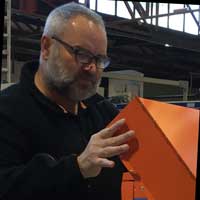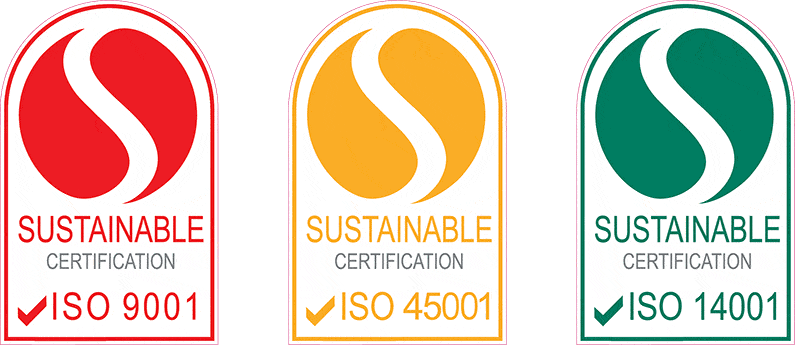
John Rakic
John Rakic is the proud Owner and Managing Director of Trafalgar Group with over 20 years of experience in the passive fire industry.
Control, movement or expansion joints are an important part of good building practice. They are used to allow for movement and expansion and stop unsightly cracking.
We have all walked along the footpath as kids and jumped over, or tried not to steps on the cracks as we called them; but they are movement joints, to stop the concrete cracking and
allow it to age well.
I will use the term “control joint” in this article to refer to these movement or expansion joints.
When we incorporate a control joint into fire rated walls or fire rated floor slabs, these control joints must incorporate fire rated materials to provide an as tested fire rated control joint system. This article discussed the fire testing requirement here in Australia, the determination of an FRL and what fire testing is required for compliance with the National Construction Code (NCC), formerly the Building Code of Australia.
This is just a snippet of the full article. To read the entire article, download the pdf today.
Table of Contents
Sadly, there are many so called fire rated sealants or “FR sealants” on the Australian market, which are being sold, purchased and installed which do not have the correct fire testing and therefore do not comply with the strict requirements of the NCC. This is even more prevalent now that the NCC has outlined that from May 1, 2022, that all fire test approvals must be current and require full compliance with the latest version of AS1530 Part 4, 2014.
This article will hopefully help you understand what constitutes a compliant fire rated control joint.
Fire Testing, Fire Ratings and the Determination of an FRL
The NCC requires elements of construction required to have an FRL, to be fire tested and approved to the current version of AS1530.4 – 2014, Methods for fire tests on building materials, components and structures Fire-resistance tests for elements of construction.
 A photo of a horizontal fire test specimen immediately after completion, where the floor slab is being removed off the top of the AS1530 Part 4 fire resistance furnace.
A photo of a horizontal fire test specimen immediately after completion, where the floor slab is being removed off the top of the AS1530 Part 4 fire resistance furnace.
Fire testing to AS1530 Part 4, represents a full developed fire in a compartment, where flashover has occurred, and temperatures rise dramatically from the start of the fire test, reaching temperatures well in excess of 1000 deg C.
The photo above shows how severe the fire test is, as you can see the bowing in the 120mm thick concrete slab, and the underside of the slab is glowing “orange. In this particular fire test, there were copper pipes in between the two steel pipes, which have completely melted.
Fire rated control joints like one would expect need to be fire tested to show that they will not reduce the FRL of the wall or floor slab they are being used in. Fire testing incorporating control joints must be conducted for all different wall types and floor slab types and thicknesses, and of course, with different joint widths to provide the requisite fire test reports
for NCC compliance. The fire tests prove that the control joint will not crack or shrink, and will stick to the substrate during real fire conditions, and prevent the passage of flames and hot gases, and equally will not get too hot on the surface of the joint on the cold or non-fire side
of each fire test.
 A picture of a 40mm control joint in a 175mm concrete floor slab, with Trafalgar FyreFLEX fire rated sealant applied to the top of the joint in the concrete only immediately prior to fire testing to AS1530 Part 4 – 2014.
A picture of a 40mm control joint in a 175mm concrete floor slab, with Trafalgar FyreFLEX fire rated sealant applied to the top of the joint in the concrete only immediately prior to fire testing to AS1530 Part 4 – 2014.
The FRL, commonly incorrectly referred to as the fire rating, provide a measure of time for both the integrity of the control joint in fire conditions (ability to resist hot gases or ignition) and the high temperature insulation properties of the control joint; that is its ability to insulate the joint from the 1000 Deg plus temperature of the fire, and maintain temperatures on the non-fire or non-exposed surface below a temperature rise of 180 deg C.
A so-called one hour fire rating, which we often hear spoken of, is in fact for regulatory purposes and the NCC, an FRL of -/60/60; that is from an actual fire test to AS1530 Part 4, the joint in question,
and the fire rated sealing material, for the given width of joint and depth of material used, and just as importantly the orientation it is installed, (one sided, or two sided application), successfully provided both integrity and insulation during the fire test, in the given wall or
floor type being fire tested for at least 60 minutes duration.
Similarly, a two hour fire rating would be an FRL of -/120/120.
I am going to now talk about different types of fire rated control joints in turn, because they
are treated differently in terms of FRL’s and fire testing requirements.


